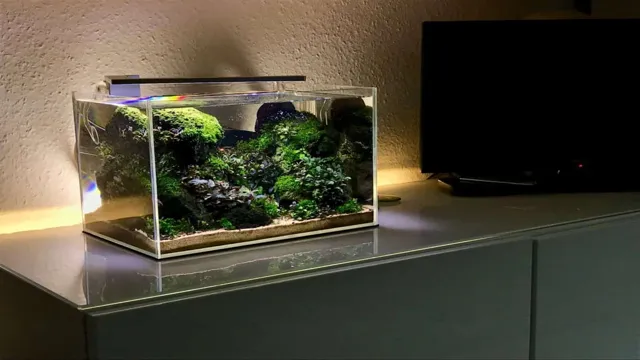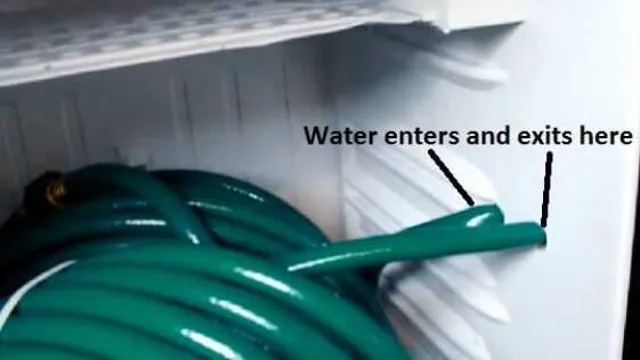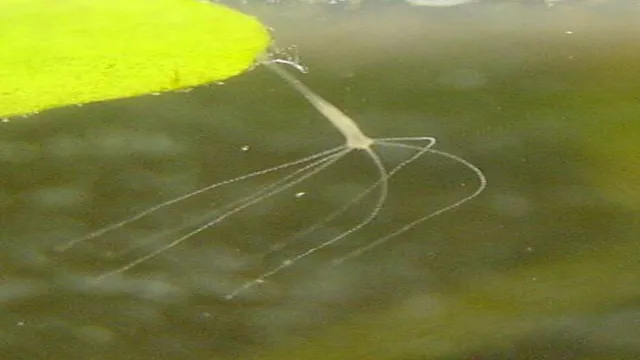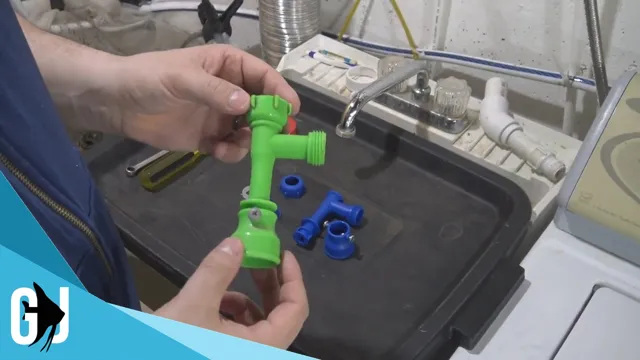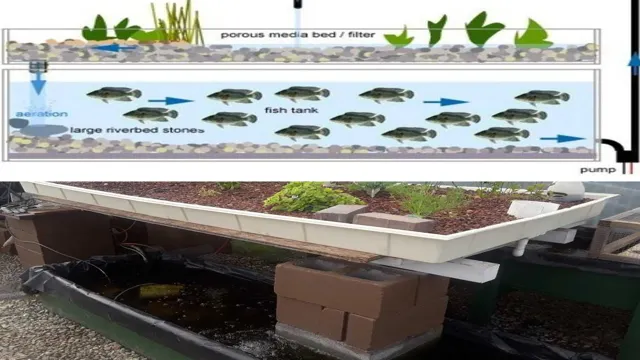Have you noticed tiny, worm-like creatures swimming around in your aquarium? These little critters are known as ciliates, and while they may seem harmless, they can actually be quite damaging to your fish and plants. Ciliates are a type of protozoa that feed on other microorganisms in the water, which can upset the delicate ecosystem of your aquarium. But fear not, there are ways to effectively kill ciliates and restore balance to your aquatic paradise.
In this blog post, we’ll explore different methods for getting rid of ciliates, from natural remedies to chemical treatments. We’ll also provide tips on how to prevent ciliate overgrowth in the first place, so you can keep your aquarium healthy and thriving. Whether you’re a seasoned fish-keeper or a newbie just starting out, understanding how to control ciliate populations is crucial for maintaining a vibrant and happy aquarium.
So let’s dive in and learn how to say goodbye to these unwanted invaders!
Understanding Ciliates
If you have an aquarium, you may have encountered ciliates before. These microscopic organisms are common in aquatic environments and can cause issues in aquariums if their populations become too large. One way to kill ciliates in an aquarium is to use a medication specifically designed for that purpose.
Look for products that contain formalin or copper, which are effective at killing ciliates but can be harmful to other organisms in the tank if not used properly. It’s important to follow the instructions carefully and monitor your aquarium closely to ensure that the medication is working and not causing any harm. Additionally, it’s a good idea to address any underlying issues that may be contributing to the ciliate problem, such as overfeeding or poor water quality.
By taking steps to prevent ciliates from overrunning your aquarium and treating them promptly when they do appear, you can help keep your aquatic environment healthy and thriving.
What Are Ciliates?
Ciliates are single-celled organisms that fall under the category of protozoa. These tiny creatures are known for their unique hair-like structures called cilia, which they use for a variety of purposes such as movement and feeding. Ciliates can be found in a variety of environments ranging from soil to water bodies, and even inside other organisms.
These tiny creatures have complex life cycles and are capable of reproducing both sexually and asexually. While some species of ciliates are harmless, others can cause serious illnesses in humans and animals. Understanding ciliates and their role in the ecosystem is important for maintaining a healthy balance in our environment.
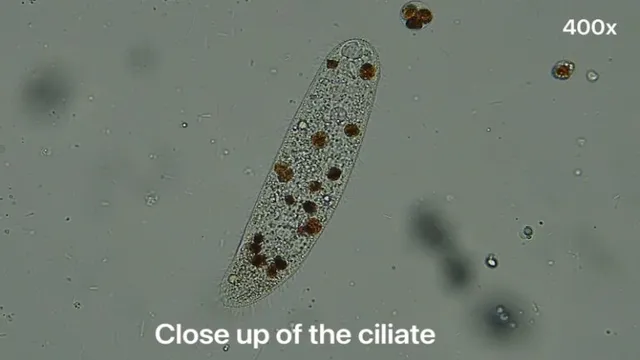
Why Are They a Problem?
Ciliates are tiny, unicellular organisms that exist in nearly every aquatic environment. While they play various beneficial roles, such as aiding in nutrient cycling, some ciliates can cause problems, particularly in overcrowded fish tanks and marine aquariums. Ciliates feed on bacteria, algae, and other organisms, and when their populations grow unchecked, they can become highly infectious, leading to parasitic infections in fish and other aquatic organisms.
These infections can manifest in various ways, including skin irritation, white patches, and even death. Moreover, some ciliates are resistant to common treatments, making them difficult to get rid of once they have established themselves in an aquarium. Therefore, understanding ciliates and their effects is crucial for aquarium enthusiasts to manage their tanks’ health and prevent any outbreaks.
Preventing Ciliate Infestation
If you have an aquarium, the last thing you want is a ciliate infestation. These tiny organisms can quickly multiply and take over the tank, causing harm to your fish and other aquatic life. Luckily, there are several steps you can take to prevent and kill ciliates in your aquarium.
Firstly, it’s important to maintain good water quality with regular water changes and proper filtration. Ciliates thrive in dirty water, so keeping the tank clean is essential. Additionally, ensure that you don’t overfeed your fish, as excess food can lead to an increase in ciliate populations. (See Also: How to Keep Turtles in Aquarium: Tips and Strategies for a Healthy Habitat)
If you do notice signs of a ciliate infestation, such as cloudy or discolored water, you can use treatments specifically designed to kill ciliates. However, be sure to follow the instructions carefully, as some treatments can harm your fish if used incorrectly. With proper care and attention, you can keep your aquarium free from ciliates and provide a healthy environment for your aquatic pets.
Maintaining Water Quality
Maintaining the water quality in your aquarium is essential for the health and well-being of your aquatic pets. One of the biggest threats to your aquarium’s water quality is ciliate infestation. Ciliates are tiny organisms that can cause serious harm to your fish and can even lead to death.
These microscopic creatures can quickly multiply and contaminate the water in your aquarium, leading to cloudy water and foul odor. To prevent ciliate infestation, it’s important to maintain a clean and healthy environment in your aquarium. This means regularly cleaning the water and replacing old water with fresh, dechlorinated water.
You should also consider using a high-quality filtration system to remove any harmful contaminants from the water. By taking these steps, you can help keep your aquarium looking beautiful and your aquatic pets healthy for years to come.
Avoiding Overfeeding
When it comes to feeding our fish, it’s important to strike a balance between providing enough food for them to thrive and avoiding overfeeding, which can lead to a host of health problems, including ciliate infestation. This condition occurs when the water becomes overrun with ciliates, single-celled organisms that can prey on the weakened immune systems of overfed fish. To prevent this, it’s important to monitor how much food you’re giving your fish and to make sure you’re not accidentally overfeeding them.
This can be tricky, as different types of fish have different feeding requirements and it can be difficult to know exactly how much food to give them. However, one tip is to observe your fish after feeding and if there is still excess food in the tank after a few minutes, you may be overfeeding. So be mindful of how much you’re feeding your fish and take the necessary steps to ensure they’re getting just the right amount to keep them happy and healthy.
Cleaning Your Aquarium Regularly
Regularly cleaning your aquarium is crucial to maintaining a healthy and thriving environment for your aquatic pets. One concern that many aquarium owners face is the possibility of ciliate infestations, which can be detrimental to the well-being of your fish. The best way to prevent ciliate infestations is to regularly clean your aquarium.
This involves changing the water, removing any debris or uneaten food, and scrubbing the glass and decorations. By doing so, you remove any potential sources of contamination and create a clean environment that is less likely to facilitate the growth of ciliates. Additionally, properly maintaining the filtration system can aid in preventing ciliate infestations.
Regularly replacing filter media and cleaning the filter ensures that the water remains clear and free of harmful organisms. In conclusion, regular cleaning is essential to preventing ciliate infestations and ensuring the health and well-being of your aquatic pets. So, make it a habit to clean your aquarium regularly to help your adorable fish thrive.
Treating Ciliate Infestation
If you notice small white spots appearing on the bodies of your fish, it’s likely that your aquarium is infected with ciliates. These single-cell organisms can be a real nuisance and can cause serious damage to your fish if left untreated. Luckily, there are a number of ways to kill off ciliates in your aquarium.
One effective method is to increase the temperature of the water to 90 degrees Fahrenheit for 24-48 hours. Ciliates cannot survive in these high temperatures and will be killed off. Another option is to use a copper-based medication that’s specifically designed to target ciliates.
Make sure to follow the instructions carefully when using any medication, however, as too high of a dose can be harmful to your fish. Overall, it’s important to act quickly when dealing with a ciliate infestation in order to protect the health and wellbeing of your aquatic pets. (See Also: How to Calculate Volume of Aquarium: Simple Formulas and Tips)
Identifying the Type of Ciliate
If you have identified the infestation in your aquarium as a ciliate, the next step is to figure out which type is causing the problem. There are several different types of ciliates that can infect fish, each with their own unique characteristics. The two most common types are Ichthyophthirius multifiliis (ich) and Chilodonella.
Ich is usually identified by the presence of small white spots on the fish’s body, whereas Chilodonella usually causes skin ulcers or red sores. Once you have identified the type of ciliate, you can begin treating the infestation. There are several different treatments available, including medicated baths, injections, and oral medications.
Be sure to follow the instructions carefully and monitor your fish closely during the treatment process. With proper care and treatment, your fish can make a full recovery from a ciliate infestation.
Using Chemical Treatments
Ciliate infestations are a common problem in aquariums that can cause significant damage to your fish. Chemical treatments are one effective solution for controlling these pesky parasites. It is important to research the best treatments to use for ciliate infestations, as some treatments may harm your fish or other aquatic life.
One of the most commonly used chemical treatments is formalin, which can effectively kill ciliates without harming your fish. Another option is copper sulfate, which is also effective but can be harmful to certain types of fish, so it is important to use this treatment with caution. When treating your aquarium with chemicals, it is essential to carefully follow all instructions and dosage recommendations to ensure the safety of your fish and the effectiveness of the treatment.
Regular water changes and careful monitoring of your aquarium’s water parameters can also help to prevent ciliate infestations from occurring in the future.
Introducing Natural Predators
If you’ve ever faced a ciliate infestation in your aquarium, you know how frustrating it can be. But there’s good news: introducing natural predators into your tank can be an effective way to control the population of these tiny pests. One such predator is the Triops, a species of freshwater crustacean that feeds on ciliates.
Adding a few Triops to your tank can help keep the ciliate population in check, as they will actively hunt for and consume the pests. However, it’s important to note that Triops require specific water conditions and may not be suitable for all aquarium setups. Another natural predator to consider is the Flagfish, a colorful fish that also feeds on ciliates.
Flagfish are relatively easy to care for and can be a valuable addition to your aquarium ecosystem. Ultimately, introducing natural predators is just one part of a holistic approach to controlling ciliate infestations. Regular water changes, maintaining a healthy water balance, and avoiding overfeeding are also essential to keeping your aquarium healthy and pest-free.
By taking a proactive approach, you can keep your aquarium thriving and free from ciliate infestations.
Conclusion and Final Tips
In summary, getting rid of stubborn ciliates in your aquarium can feel like a daunting task. But fear not! By keeping up with regular water changes, maintaining optimal water parameters, and introducing natural predators such as flagellates and rotifers, you can effectively eliminate these unwanted guests. Just remember, a healthy and balanced aquarium ecosystem is the key to a successful aquatic hobby. (See Also: Is London Aquarium Worth it? An In-Depth Review)
So don’t let those ciliates bring you down, stay informed and keep swimming!”
FAQs
What are ciliates and why are they harmful to aquariums?
Ciliates are a type of protozoan that can cause problems in aquariums, including the potential to harm other organisms or create imbalances in the ecosystem.
What are some signs that my aquarium has a ciliate infestation?
Signs of a ciliate infestation can include cloudy or discolored water, sick or dying fish, and an overall decline in water quality.
How do ciliates spread in an aquarium?
Ciliates can spread through contaminated water or by hitchhiking on live plants, fish, or other aquarium inhabitants.
What are some methods for controlling ciliate populations in an aquarium?
Some methods for controlling ciliate populations can include water changes, improving filtration, using medications or chemicals, and quarantining infected fish or plants.
Can ciliates harm humans or other pets in the household?
While ciliates are generally harmless to humans and other pets, it’s important to wash your hands thoroughly after handling aquarium water or equipment to prevent the spread of any potential pathogens.
How can I prevent ciliate infestations in my aquarium?
To prevent ciliate infestations, it’s important to maintain good water quality, avoid overfeeding your fish, and quarantine any new additions to your aquarium before introducing them to the main tank.
What is the best way to clean the aquarium after a ciliate infestation has been treated?
After a ciliate infestation has been treated, it’s important to clean the aquarium thoroughly by removing any dead fish or plants, performing water changes, and cleaning or replacing the filter media to ensure that all potential pathogens have been eliminated.


